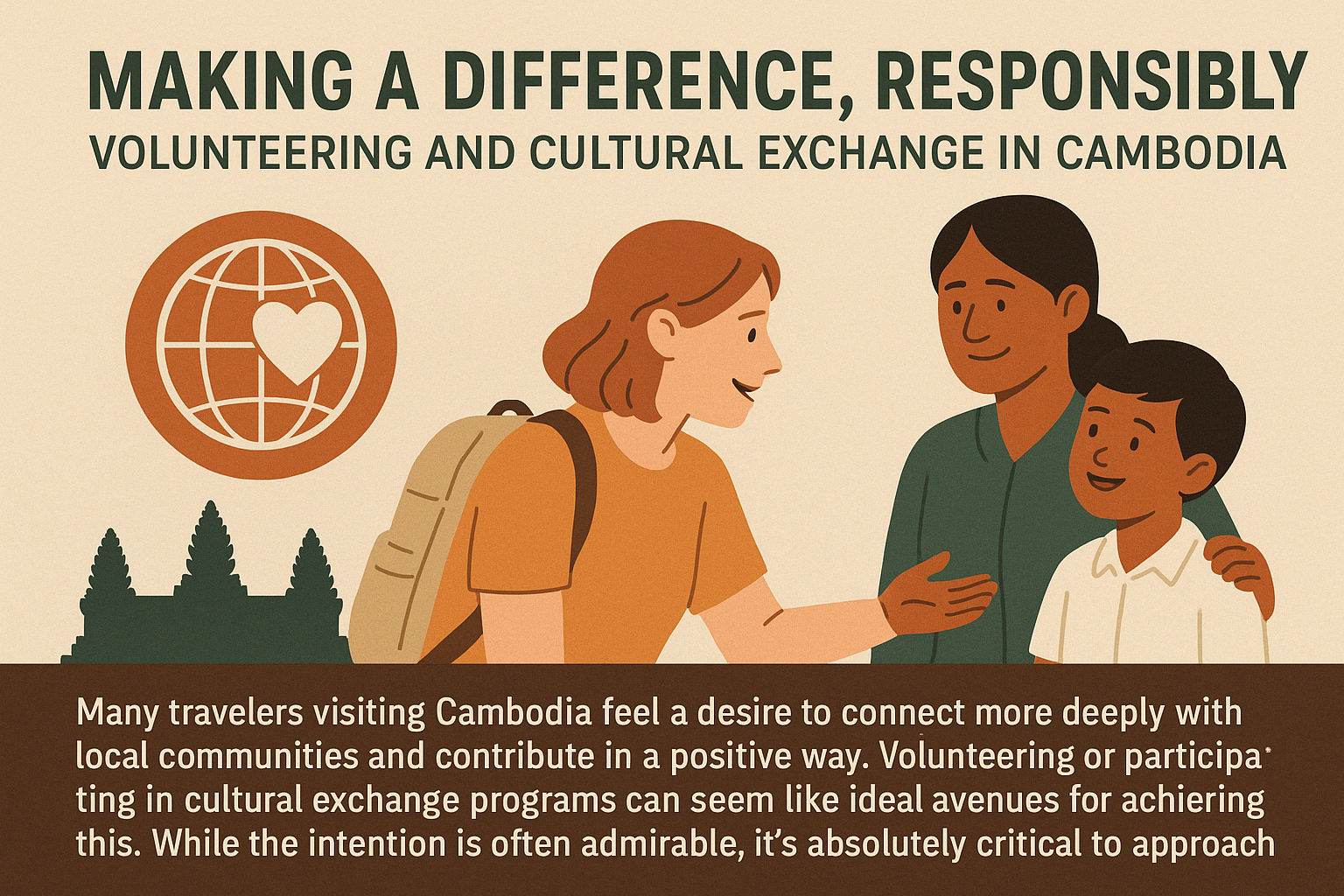Cambodia’s temples, from the awe-inspiring ancient ruins of Angkor to the vibrant, active Buddhist pagodas (wats) found in every town and village, are places of immense spiritual and cultural significance. They are not merely tourist attractions but living centers of faith and community hubs. Visiting these sacred spaces is a privilege, offering profound insights into Khmer heritage. To ensure your visit is both meaningful and respectful, understanding and observing local customs and etiquette is crucial.
1. Dress for Respect: The Importance of Modesty
This is perhaps the most important rule and the one most strictly enforced, especially at major sites like Angkor Wat and the Royal Palace.
- DO: Cover your shoulders and knees. This applies to all genders. Opt for lightweight long trousers, long skirts (below the knee), capris, or shirts with short or long sleeves.
- DON’T: Wear tank tops, sleeveless shirts, spaghetti straps, crop tops, shorts, or very short skirts/dresses. Revealing clothing is considered highly disrespectful.
- Tip: While carrying a scarf or sarong to quickly cover up is possible, it’s more respectful (and often required at stricter sites) to be appropriately dressed upon arrival. Some less-visited local temples might seem more relaxed, but adhering to the dress code always shows respect.
2. Barefoot Reverence: Removing Your Shoes
Entering sacred buildings within a temple complex requires removing your footwear.
- DO: Take off your shoes (and hat/cap) before stepping inside main prayer halls (viharn), ordination halls (ubosot), or onto any raised platform housing Buddha images or where people are praying. Look for designated shoe racks or areas near the entrance.
- DON’T: Wear your shoes inside these sacred indoor spaces.
- Note: Wearing socks inside is generally acceptable. This practice signifies respect and helps keep the sacred interiors clean.
3. Mindful Interactions: Engaging with Monks and Worshippers
Active temples are places of worship and residence for monks. Always behave with reverence.
- DO: Speak softly and maintain a calm demeanor. Avoid loud chatter, running, or disruptive behavior.
- DO: Greet monks respectfully with the traditional Sampeah (palms together in prayer-like gesture). Monks are highly revered in Cambodian society.
- DO (Especially for Women): Be aware that Buddhist monks follow vows that restrict physical contact with women. Women should never touch a monk or even brush against his robes. If giving something, place it down for him to pick up or pass it via a male intermediary. Men should also be mindful and avoid overly familiar physical contact.
- DO: Ask permission before taking photographs of monks or nuns.
- DO: If you wish to make a donation, use the designated donation boxes. Avoid pressing money directly into a monk’s hands unless it’s part of a specific, guided ceremony.
- DON’T: Disturb monks or local people while they are chanting, praying, or meditating. Avoid walking directly in front of them.
4. Hands Off Heritage: Respecting Artifacts and Statues
Whether at ancient ruins or active temples, treat all religious objects with reverence.
- DO: Admire Buddha images, statues, carvings, and murals from a respectful distance.
- DON’T: Touch, lean on, sit on, or climb on any statues, carvings, temple structures, or artifacts. Oils from skin can damage ancient surfaces over time, and touching sacred objects is considered deeply disrespectful.
5. Seeking Serenity: Best Times for a Peaceful Visit
To experience the tranquility of a temple environment and avoid crowds:
- DO: Consider visiting early in the morning (around sunrise) or late in the afternoon (before closing for ancient sites). Temperatures are cooler, the light is softer, and fewer tour groups are usually present.
- DO: Be aware that active wats are community centers. Early mornings might involve observing monks collecting alms (do so respectfully from a distance without interfering) or listening to morning chants. Evenings might have chanting sessions.
- DON’T: Necessarily avoid midday if it’s your only option, but be prepared for heat and potentially more visitors at popular sites.
6. Capturing Memories Ethically: Photography Guidelines
Photography is usually permitted, but ethical considerations are important:
- DO: Always ask for permission before taking photos of people, including monks, nuns, and worshippers, especially close-ups. Understand and respect a refusal. A smile and polite gesture go a long way.
- DO: Check for signage indicating areas where photography might be restricted (often inside certain sensitive buildings or during specific ceremonies).
- DON’T: Use flash photography inside temple buildings, as it can disturb others and potentially harm delicate artwork like murals.
- DON’T: Take disrespectful photos. Avoid posing inappropriately with Buddha statues (e.g., mimicking poses, touching the statue, turning your back directly to it for a selfie). Be mindful of your posture and actions.
Conclusion
Visiting Cambodia’s temples offers a unique window into the country’s profound spiritual and artistic heritage. By approaching these sacred spaces with awareness and adhering to these simple guidelines of respect – dressing modestly, removing shoes, interacting mindfully, refraining from touching artifacts, choosing visit times thoughtfully, and photographing ethically – you not only avoid causing offense but also enhance your own experience. Showing respect enriches your connection to the place and honours the enduring culture and faith of the Cambodian people.


